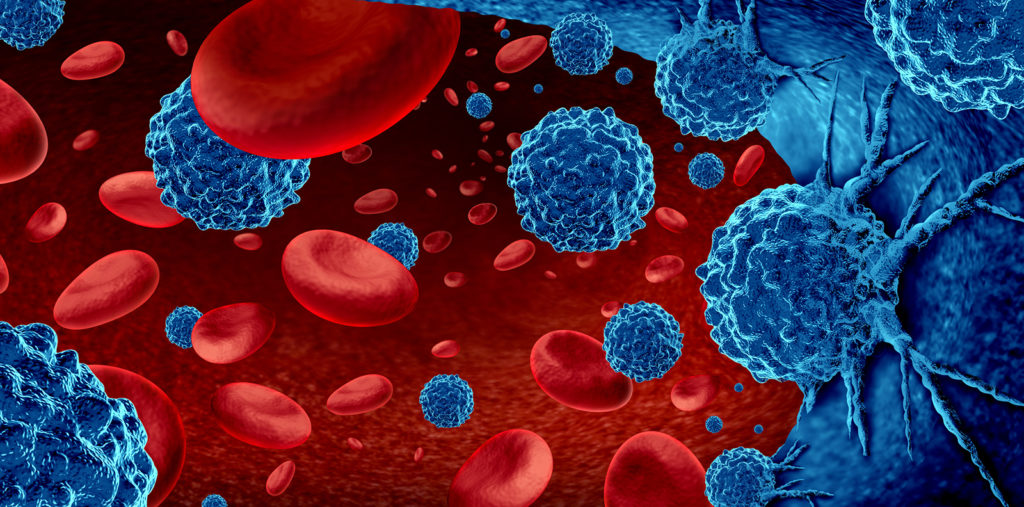
Recently Diagnosed or Relapsed? Stop Looking For a Miracle Cure, and Use Evidence-Based Therapies To Enhance Your Treatment and Prolong Your Remission
Multiple Myeloma an incurable disease, but I have spent the last 25 years in remission using a blend of conventional oncology and evidence-based nutrition, supplementation, and lifestyle therapies from peer-reviewed studies that your oncologist probably hasn't told you about.
Click the orange button to the right to learn more about what you can start doing today.
- You are here:
- Home »
- Blog »
- Multiple Myeloma »
- CAR-T Side Effects for Myeloma
CAR-T Side Effects for Myeloma

Are CAR-T side effects for myeloma any different than the side effects we’ve expeirenced and gotten to know for the chemo and radiation regimens we’ve already fought through? According to the research linked and excerpted below, yes, they are potentially more serious and more wide spread.
First and foremost, I have to go on record by saying two things-
- First, that CAR-T therapy for MM shows a great deal of promise for MM patients in general and those MM patients who have relapsed and who may be running out of therapy options.
- Secondly, toxicity from conventional myeloma therapies has saddled me with a series of long-term and late stage side effects. I firmly believe that it is critical for MM patients to understand the possible CAR-T side effects for myeloma.
Unfortunately, I have no alternatives to offer a myeloma survivor considering CAR-T therapy. I will say, however, that in the same way that “pre-habilitation” benefits newly diagnosed cancer patients about to undergo therapy, I believe that pre-habilitation can help the myeloma patient who is about to undergo CAR-T cell therapy.
Are you considering CAR-T cell therapy? If you would like to learn more about evidence-based, non-conventional pre-habilitation therapies, let me know at David.PeopleBeatingCancer@gmail.com.
David Emerson
- MM Survivor
- MM Cancer Coach
- Director PeopleBeatingCancer
New Myeloma Therapies, New Side Effects
“T-cell-directed therapies designed to treat multiple myeloma have certain side effects that are still being revealed as more and more patients use these treatments…
CAR-T Cells
In the CAR T-cell Therapy that we are familiar with within myeloma treatment, a patient’s blood is taken and their T-cells are engineered to specifically recognize and destroy myeloma.
In both current FDA-approved CAR T-cell therapies, BCMA is the specific target of the myeloma cells that the T-cells are engineered to detect and eliminate.
Some of the side effects from these therapies that will be presented throughout this article (and Dr. Cicero’s presentation) can be seen as similar to the physiological responses our body has when fighting the flu or a different virus…
Reactions to the CAR T-Cell Therapy in Today’s Myeloma
The CAR T-therapies today have side effects that can be quite serious.
In the KarMMa-3 ide-cel trial of 376 patients, almost every person (99%) had some kind of toxicity due to the treatment. You can see the breakdown below.
- Hematologic event: neutropenia (78%), anemia (66%), thrombocytopenia (54%)
- Gastrointestinal event: nausea (45%), diarrhea (34%), constipation (27%)
- Other events: infection (58%), fatigue (28%), headache (24%)
- CRS (cytokine release syndrome): 88%, grade 3-5 CRS was only in 5%
- ICANS: 15%
In the CARTITUDE-4 cilta-cel trial of 416 patients, every single patient (100%) experienced some level of toxicity due to the treatment.
- Hematologic event: neutropenia (89%), anemia (54%), thrombocytopenia (54%)
- Gastrointestinal event: nausea (43%), diarrhea (33%), constipation (25%)
- Other events: infection (62%), fatigue (28%), headache (26.4%)
- CRS (cytokine release syndrome): 76.1%, grade 3-5 CRS was 1.1%
- ICANS: 19.3%
What is Cytokine Release Syndrome (CRS)?
It’s a systemic inflammatory response. The T cell stimulation causes a cytokine storm, and there are manifestations of similar flu-like illness such as CRS. Any organ can be involved (decreased blood pressure, kidney and/or lung involvement requiring intervention, etc. as the CRS becomes more serious.
The predictors of severity include:
- Initial disease burden
- If one has a lot of myeloma cells prior to CAR T, the higher their risk of developing serious CRS. Bridging therapy (such as chemotherapy) can be used before CAR T to lower this risk.
- Strength of T cell activation and degree of T cell expansion
- Dictated by the actual CAR themselves- how strong it’s binding to the myeloma cell and how fast it’s moving through your body
What is ICANS (Immune effector Cell-Associated Neurotoxicity Syndrome)?
When the T-cells are expanding throughout the body, seeking for myeloma cells, they cross the blood-brain barrier.
This barrier is separating our central nervous system (brain and spinal cord) from the rest of our body and the outside world. When the CAR-T cells cross the blood-brain barrier, they disrupt it.
ICANS is less understood than CRS in general, but the hypothesis is that the cytokines are able to enter the central nervous system space and there is able to be some toxic effects on our brain itself.
Symptoms of ICANS are:
- Mild confusion
- Headaches
- Impaired fine motor skills (handwriting impaired)
- Hallucinations
- Physical weakness
- Cranial nerve palsies (can cause partial weakness or paralysis of certain areas)
- Seizures
- Somnolence (drowsiness or desire to fall asleep)
Reactions to the Bispecific Antibody Therapy in Today’s Myeloma
Bispecific antibody therapies, as mentioned earlier, also use T-cells as part of their mechanism of action and, therefore, also result in similar side effects as CAR T-cell therapy.
In the MajesTEC-1 (teclistimab) study of 165 patients, 100% of patients had adverse events.
- Hematologic events: neutropenia (70%), anemia (52.1%), thrombocytopenia (40%)
- Gastrointestinal event: nausea (27%), diarrhea (47%), constipation (34%)
- Other events: infection (76%), fatigue (46%), headache (39%)
- CRS (cytokine release syndrome): 72%, grade 3-4 only 0.6%
- ICANS (14.5%)
In the MagnetisMM-3 (elranatamab) study of 123 patients, 100% of patients had an adverse event.
- Hematologic events: neutropenia (70%), anemia (52.1%), thrombocytopenia (40%)
- Gastrointestinal event: nausea (27%), diarrhea (47%), constipation (34%)
- Other events: infection (76%), fatigue (46%), headache (39%)
- CRS (cytokine release syndrome): 72%, no grade 3-4
- ICANS: (3.4%)
In the MonumenTAL-1 (talquetamab) study of 176 patients, 100% of patients had adverse events.
- Hematological: neutropenia (67%), anemia (60%), thrombocytopenia (37%)
- Gastrointestinal event: nausea (30%), diarrhea (30%), constipation (7%)
- Other events: infection (47%), fatigue (33%), headache (20%)
- CRS (cytokine release syndrome): 77%), grade 3-4 3%
- ICANS (3.3%)
An interesting point to note is that talquetamab causes significant skin and taste problems. Peeling, itching, and skin darkening are prevalent. Many patients see significant changes to their nails and/or lose their sense of taste and feel a strange physiological change in their tongue.
BCMA-targeted bispecifics are more likely to cause infection than other targeted therapies like GPRC5D and FcRH5.
The main cause of the high infection for bispecific antibodies is the continual administration of the therapy. The longer that one receives bispecifics, the higher the infection risk rate. Prophylaxis measures are taken to help prevent and manage these infections, such as antibiotics and IVIG.
ICANS is less likely to occur in bispecific antibody therapy, although it is occasionally seen as seen in the lists above. This is because the T-cells are less likely to cross the blood/brain barrier than CAR-T cells. ICANS usually appear as headaches versus the more severe presentations in bispecific antibodies.
Conclusion
The main symptoms of immunotherapy in multiple myeloma are CRS (cytokine release syndrome), ICANS (immune effector cell neurotoxicity syndrome), infections, and more.
These symptoms are often reversible and easy to manage, but you, your caregiver, and your healthcare team should be aware of these risks and continually monitor for signs of these CAR-T side effects for myeloma.”


